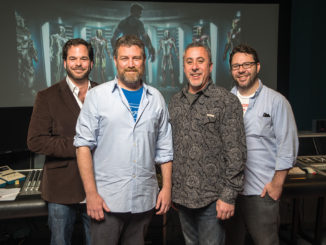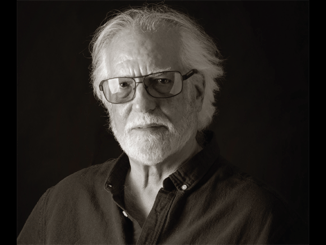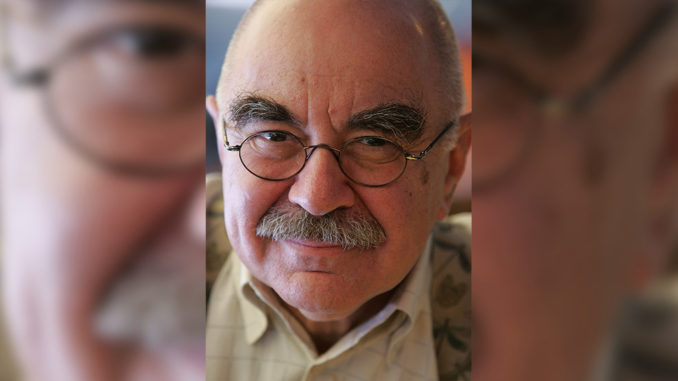
by Tomm Carroll
For award-winning editor Alan Heim, ACE, it’s been a busy autumn. Not only has the Editors Guild Board member recently been elected President of the American Cinema Editors (ACE), but he also has a new movie coming out. While an A-list picture editor like Heim (an Oscar winner for All That Jazz) is certainly no stranger to seeing a film on which he worked released in the fall, this particular project is a different matter altogether: He was one of the producers.
The Cutting Edge: The Magic of Movie Editing is a documentary. And, as Visions of Light and Precious Images did for cinematographers and directors, respectively, this feature-length doc champions the often under-appreciated but critical role of editing in the filmmaking process. It also presents the history of the craft and explores the changing relationships between editors and directors from the earliest days of silent cinema to the high-tech Hollywood blockbusters of the present.
Among the editors appearing in the film are Dede Allen, Donn Cambern, Michael Kahn, Carol Littleton, Sally Menke, Walter Murch, Tom Rolf and Thelma Schoonmaker. Directors interviewed include James L. Brooks, James Cameron, Lawrence Kasdan, Anthony Minghella, Martin Scorsese, Steven Spielberg, Quentin Tarantino and Paul Verhoeven.
Heim served as executive producer of the film, along with documentary filmmaker Wendy Apple, who also directed and produced. Three years in the making, The Cutting Edge had its world premiere screening as the opening night film at the Hollywood Film Festival in October. The Cutting Edge will make its television debut on the Starz Encore cable channel December 12.
“I learned a lot more than I ever wanted to know about how you get these movies made.” – Alan Heim
CineMontage recently caught up with Heim to ask him about The Cutting Edge, how he got it made and his experience as a first-time executive producer.
CineMontage: How did the idea for The Cutting Edge come about?
Alan Heim: I’ve been on the board––and now I’m president of––the American Cinema Editors (ACE), and we always talked about doing a film like [the 1992 documentary on cinematography] Visions of Light. And you know, we editors in general feel much under-appreciated. So we thought we could make a film like this and raise the profile of the editing community. It’s the editors’ shot at getting some airtime.
My friend Wendy Apple, who is a documentary filmmaker, did some research and discovered there is almost nothing available about editing. There are a few books, but there is no real information about the history of editing––and it’s only a hundred years old. She came to me one day and said, “Have you guys ever talked about making a movie?” And I said, “Funny thing…” So we went before the Board and we presented it as an ACE-backed project.
CM: How did you manage to license all of the film clips?
AH: Wendy and I approached the film studios and said we were doing this film, and that we needed film clip rights. We took every executive in charge of film clips to lunch, and everybody said the same thing: “Well, this is a very worthy project and we will give you favored nations treatment on the clip rights, but when you get to Warner Brothers, you’re gonna have a lot of trouble, because Warners never does this.” So, we went last to Warner Brothers with great trepidation and there was at the time a woman named Judith Singer who was head of clips for a long time. We took her to lunch and she was absolutely wonderful. She loves editors and she felt this was a great project and––much to the surprise of everyone––she gave us favored nations free. Without free clips, we couldn’t have done this movie. We have a little under 300 film clips in The Cutting Edge and even at the best rates it would have cost a couple of million bucks to get this kind of stuff.
“It’s going to be a great teaching tool.” – Alan Heim
CM: What was your budget?
AH: I can tell you pretty much how much it would have cost without the donated material; it would’ve been in the neighborhood of three-and-a-half to four million dollars, which would have been beyond anybody’s capacity for a documentary. The Cutting Edge was probably around a million, under a million. We’re still doing the tally.
CM: Where did you find the financing?
AH: Wendy and I went to New York in June of 2001 and met with several venues for financing the movie. People were interested, but suddenly it’s 9/11 and funding for everything disappears. PBS said they were only interested in doing politically oriented shows. We had to rethink everything. And through friends of Wendy’s, we got some contacts with NHK, the Japanese Television Network. They were interested in the high-definition television aspect, which is how we planned to do the film. So they were the first ones in. George Feltenstein, head of Warner Home Video, loves old movies and he loved the idea. So they gave us money with almost no strings attached. The big budget hole was filled by Starz Encore, the pay cable network. The BBC came in and AVRO, Dutch television, invested cash money.
CM: Did you enjoy being a producer?
AH: Luckily Wendy did a lot of the producing. We had a lot of volunteer help too, a tremendous amount. The entire sound department from The Notebook came on board at the end. Paul Carden and the Racket pitched in with sound effects. Phillip Tolman did the music and the mixers at Todd-AO got a free studio. We did these things at weird hours at night. Many companies pitched in. It’s been a trip and it’s been three and a half years. Wendy and I were basically the deficit financers, so we’re hoping to recoup our investment and eventually have some money for ACE also.
CM: And get your lunch money back too…
AH: Yes, that’s part of it. A lot of lunch money. Wendy held the project together. She actually gave up her teaching job for a time and had no income, just living on a home improvement loan.
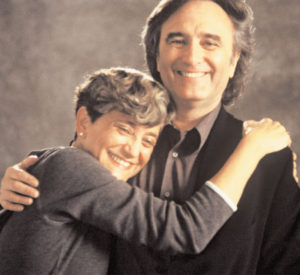
Encore
CM: What about the music clips?
AH: And then there’s the music. No matter who gives you what for free, the music clearances will cost you money. And we got a pretty good deal, but it still extended our budget a little bit. I also don’t think a film like this will ever be made again because the studios have become so bottom line-oriented. I just don’t think they’ll be willing to give up clip rights.
CM: Did you get all the music you needed?
Yes, virtually. There was one music problem, where a company just wanted too much money and it would have affected our favored nations statement, and would have raised the stakes for everybody else. It would have raised our budget about $20,000. So we had to drop a cue from Scorsese’s Raging Bull, which did not make Marty happy, but he understands. And it’s just a background cue. But we pretty much got everything we wanted.
The music rights for these films also become very obscure sometimes. Some of them are owned jointly in Europe. For The Good, the Bad and the Ugly, which we really wanted, it was very hard to find out who owned it. The company had changed its name. I had to call a friend in Rome to get a new phone number.
CM: As far as the participants––the editors, the directors––go, were you able to include everyone you wanted?
AH: Pretty much. Scorsese came in at the last minute. When he was out here in LA doing prep work for and shooting Aviator, we approached him through his editor Thelma Schoonmaker and we got back messages that he was just too busy. When we locked the film in March, we sent a release to Scorsese asking for permission to use Raging Bull. And as I understand it, he walked into Thelma’s office with the paper and said, “What is this, don’t they want me in the movie?”
Fortunately, Wendy was going to be honored by the Museum of Broadcasting in New York, and she filmed Scorsese. He plays a big part in the movie, because he talked about the history [of film editing]. It was great. Marty was informative and lively.
“People are much more giving than you would expect. The directors for the most part were incredibly generous.” – Alan Heim
CM: Did you travel anywhere else to shoot?
AH: We went to San Francisco for certain people, including George Lucas. We had to go to Santa Barbara for Sean Penn and his editor Jay Cassidy. We found for the most part that the editors who worked with these directors would open the door for us.
CM: Who were you unable to get?
AH: The one guy we were sorry we couldn’t get was Ralph Enders because Ralph started in 1922. We had him booked on several occasions and every time he was taken to the hospital. He was 94 and he died. Apart from his Academy Award credits, we could have talked about the early days of editing.
CM: Were there any interviews that particularly stood out for you?
AH: Steven Spielberg was absolutely wonderful. We went up to Amblin and he called downstairs, saying he’d be 15 minutes late––and when he showed up, he was amazing. He walked in and introduced himself all around and then he said, “Now what’s this interview about?” And we said “Editing,” and he said, “Oh yeah, okay.” And he just switched into this mode and gave us something like an hour of really good material.
I like that there is some funny stuff in it––and not only for editors. Like the sequence with director Alexander Payne and editor Kevin Penn, where it’s cut back and forth. It’s almost as if they’re in the same room. And it’s a funny resolution; who can imagine an editor “buying” his version from the director? It’s terrific.
And Michael Kahn is supposedly not big on interviews, yet he was wonderful––warm, outgoing and, in that little clip at the end, even funny.
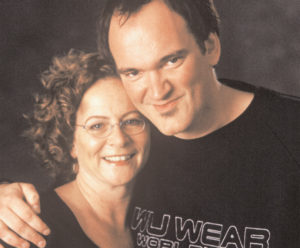
CM: Is there a DVD release planned?
AH: Yes. It’ll be on Warners Home Video next year sometime. There will be a little bit of additional material, not a lot. We’re hoping for some nice university sales with it. We think it’s going to be a great teaching tool. Speaking of which, over 100 hours of our interviews and all of the transcripts for this film are being housed at the Academy of Motion Picture Arts and Sciences Library. So if you want to learn something about editors, you now have a place to find it.
CM: On the subject of learning, was there anything that you personally learned from executive producing this film?
AH: I learned a lot more than I ever wanted to know about how you get these movies made. One of the things I found out during the film––well, I always knew this––is that editors like to talk about their work. Another thing I learned was that people are much more giving than you would expect. The directors for the most part were incredibly generous and I think very honest in their view of the process and the editors they work with. What Spielberg says about Michael Kahn is just wonderful.
CM: Quentin Tarantino and his editor Sally Menke talk rather straightforwardly about the benefits of their push-pull working relationship in the film.
AH: Yes, I think a good editor will do the pushing and/or the pulling. Bob Fosse used to refer to me as a collaborator, which I mention in the The Cutting Edge, but at one point he referred to me as his conscience because I would say, “You know, Bob, it’s really not working.” Sometimes a director wants it to work so much, as Spielberg said, because he spent all that time shooting a scene, and you look at it and say, “This is not believable.” But the director doesn’t want to see that for a while.
I can’t tell you how many times I’ve had directors say to me, “We’re not going to be able to use this material because we had so much trouble getting the performance out of the actor.” And I look at it and it looks really good. Then sometimes I’ve made whole sequences and it looks terrible and the director is absolutely right. And then you say, “Okay, right, let’s re-shoot, quick.”
CM: That reminds me of what Walter Murch says in the film––that an editor comes to the project like a blank slate. He hasn’t been through the production, he doesn’t have any of that other baggage, he just sees what’s been shot.
AH: That’s also my belief; I hate to go to the set. I think to be clear of the set is great. The other thing is when you go to the set as an editor everybody says, “Oh my God, the editor’s here! What’s wrong?”


